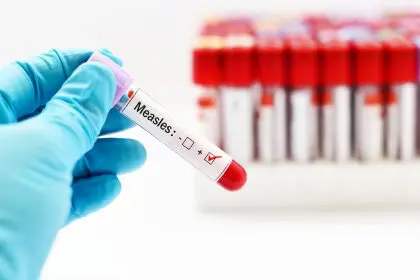An invasive species of carnivorous ants from Asia has established populations across approximately 20 states, creating a growing public health concern as the insects cause severe allergic reactions in humans while proving exceptionally difficult to detect and control. The Asian needle ant, known scientifically as Brachyponera chinensis, delivers painful stings that can trigger life-threatening anaphylactic reactions in sensitive individuals.
Health officials in Georgia reported at least three cases of severe anaphylactic reactions to the ant stings last year, highlighting the serious medical risks posed by this relatively unknown invasive species. The ants reach peak population numbers during July and August, increasing the likelihood of human encounters during summer outdoor activities.
Entomologists and public health experts emphasize that the spread of Asian needle ants represents a significant challenge for both ecological management and human safety, as the insects remain largely invisible to homeowners until painful stings occur during routine gardening or yard work activities.
Geographic expansion accelerates across eastern regions
Asian needle ants have established populations from Connecticut in the north to Florida in the south, with additional confirmed populations in Wisconsin and Washington state. Recent reports suggest the species may have reached Texas, indicating continued westward expansion beyond their current established range.
The invasive insects first arrived in the United States in 1932 when they were discovered in Decatur, Georgia, though researchers believe the initial introduction likely occurred earlier in the 20th century. Evidence suggests the ants had already spread to three states by 1934, indicating rapid early establishment that went undetected for years.
The species remained relatively localized through the 1970s before experiencing dramatic range expansion beginning in the 1980s and 1990s. Researchers have documented their complete colonization of North Carolina between 1991 and 2017, despite comprehensive ant surveys in 1962 finding no evidence of their presence in the state.
Climate projections suggest that suitable habitat for Asian needle ants could increase by as much as 75% over the next 50 years as warming temperatures and changing precipitation patterns create favorable conditions for their continued expansion across North America.
Unique pain characteristics distinguish dangerous stings
The Asian needle ant’s sting produces a distinctive pain pattern that differentiates it from other stinging insects, beginning with intense acute pain that subsides before returning repeatedly over extended periods. Initial pain typically lasts several seconds before disappearing, only to return unexpectedly at the same location minutes later.
This recurring pain cycle can continue for two hours in some individuals, while others report experiencing intermittent sting pain for 24 to 48 hours following initial contact. The unpredictable nature of pain recurrence creates ongoing discomfort and anxiety for sting victims who cannot predict when symptoms will return.
The ant’s name derives from the Japanese term “Oo-hari-ari,” meaning giant needle ant, which refers to the proportionally large size of their stinger relative to their small body size. Despite measuring only 0.2 inches in length, the ants possess disproportionately large stingers capable of delivering significant amounts of venom.
Unlike fire ant stings that produce characteristic blisters, Asian needle ant stings do not create visible skin lesions, making it difficult for victims to identify the source of their pain and for medical professionals to diagnose the cause of allergic reactions.
Severe allergic reactions create medical emergencies
Medical research indicates that approximately 1% of individuals stung by Asian needle ants experience life-threatening anaphylactic shock, while 2.1% of people in affected areas develop systemic allergic reactions to the venom. The risk appears highest among individuals who experience repeated stings over time, suggesting cumulative sensitization effects.
Documented cases of severe reactions have occurred in Georgia, Kentucky, Mississippi, North Carolina, South Carolina, Tennessee, and Washington DC, indicating widespread potential for serious medical consequences across the ant’s established range. Many emergency room visits likely involve undiagnosed Asian needle ant stings due to the insects’ small size and secretive behavior.
Symptoms of severe reactions include skin reactions such as hives and flushing, respiratory distress including airway constriction and difficulty breathing, cardiovascular effects including low blood pressure and rapid pulse, and gastrointestinal symptoms including nausea and vomiting. Psychological symptoms such as feelings of impending doom may also accompany severe allergic reactions.
Medical professionals recommend that individuals with known sensitivities to other stinging insects carry epinephrine auto-injectors when working in areas where Asian needle ants may be present, as cross-reactivity between different insect venoms can increase the risk of severe allergic responses.
Detection challenges complicate management efforts
Asian needle ants prove exceptionally difficult to locate and control because they do not establish visible pheromone trails like many other ant species. Instead, they use a unique communication method called tandem carrying, where individual worker ants physically guide other workers to food sources by carrying them to the location.
The ants establish small, flat colonies in leaf litter, rotted logs, firewood, mulch, and other organic debris that blend seamlessly with natural environments. Their dark brown coloration with lighter orange legs and antennae provides effective camouflage in their preferred habitats, making visual detection nearly impossible without disturbing their nesting areas.
Colonies typically remain hidden beneath railroad ties, logs, bricks, pavers, and in potted plants, under wood piles, and within lawn areas where they can remain undetected until human activity disturbs their nesting sites. The ants’ preference for moist environments means they often establish populations in areas where people regularly conduct gardening and yard maintenance activities.
Professional identification requires microscopic examination to distinguish Asian needle ants from similar-looking native species, making accurate species confirmation challenging for homeowners and even some pest control professionals without specialized training.
Ecological disruption threatens native ecosystems
The predatory behavior of Asian needle ants disrupts established ecological relationships by hunting native insects that serve important functions in local ecosystems. Their preferred prey includes flies, beetles, grasshoppers, and particularly termites, which play crucial roles in forest health through organic matter decomposition.
Native ant species that Asian needle ants displace often serve essential functions in seed dispersal for various plant and tree species. When invasive ants take over territory previously occupied by native species, seeds that depend on ant dispersal mechanisms may fail to spread, potentially affecting forest regeneration and plant community composition.
The cumulative effect of reducing native insect populations can cascade through entire ecosystems, affecting birds and other animals that depend on native insects for food sources. This ecological disruption may contribute to broader declines in biodiversity that are already occurring due to habitat loss and other environmental pressures.
Research indicates that Asian needle ants can achieve sufficient population densities to significantly alter local arthropod communities, suggesting that their continued expansion could have widespread ecological consequences across eastern North American forests and residential landscapes.
Limited management options require integrated approaches
Current control methods for Asian needle ants remain limited and less effective than those available for other invasive ant species due to their unique behavioral characteristics and habitat preferences. Conventional ant baiting strategies prove less successful because the ants do not establish pheromone trails that can be exploited to deliver poison back to colonies.
Protein-based baits containing termite skin extracts have shown some effectiveness in research trials, but successful control requires patience and persistence as the ants may take considerable time to discover and transport poisonous baits back to their hidden colonies. Broad-spectrum insecticide spraying proves ineffective and can harm beneficial garden species.
Management strategies focus on habitat modification rather than elimination, including removing mulch from problem areas, elevating wood piles to prevent moisture accumulation underneath, and carefully monitoring for colony establishment. These preventive measures can reduce the likelihood of ant establishment in high-risk areas.
Professional pest control may be necessary for confirmed infestations, though successful treatment requires accurate species identification and targeted application methods. Agricultural extension services provide free identification assistance for property owners uncertain about ant species present on their land.
Prevention strategies reduce encounter risks
Property owners can implement several preventive measures to reduce the likelihood of Asian needle ant establishment and minimize the risk of painful stings during outdoor activities. Maintaining dry conditions around potential nesting sites by elevating firewood and lumber storage areas helps discourage colony establishment.
Personal protective equipment including gloves, long sleeves, and closed-toe shoes provides physical barriers against stings during gardening, yard work, and other activities that may disturb ant nesting areas. Careful attention to surroundings when working with mulch, compost, or stored wood materials reduces the risk of inadvertent contact with hidden colonies.
Individuals with known sensitivities to insect stings should consider carrying epinephrine auto-injectors when working in areas where Asian needle ants may be present, particularly during peak activity periods from April through September when colony activity and swarming behaviors increase the likelihood of human encounters.
Regular property inspection for signs of ant activity, though challenging due to their secretive nature, can help identify problem areas before colonies become fully established. Early detection and intervention prove more effective than attempting to control well-established populations.
Research priorities address knowledge gaps
Scientists continue investigating the factors that enabled Asian needle ants to expand rapidly across the United States beginning in the 1980s after remaining relatively localized for nearly 50 years following their initial introduction. Understanding these expansion triggers could inform prevention strategies for other invasive species.
Climate change research focuses on predicting future suitable habitat areas for Asian needle ants to help wildlife managers and public health officials prepare for continued range expansion. These projections assist in developing proactive management strategies rather than reactive control efforts.
Medical research priorities include developing better diagnostic tools for identifying Asian needle ant stings and understanding the mechanisms behind their unique venom effects. Improved diagnostic capabilities could help emergency medical personnel provide more targeted treatment for allergic reactions.
Ecological research continues examining the full extent of Asian needle ant impacts on native ecosystems and developing strategies to protect vulnerable native species from displacement and predation pressure created by the invasive ants.


















